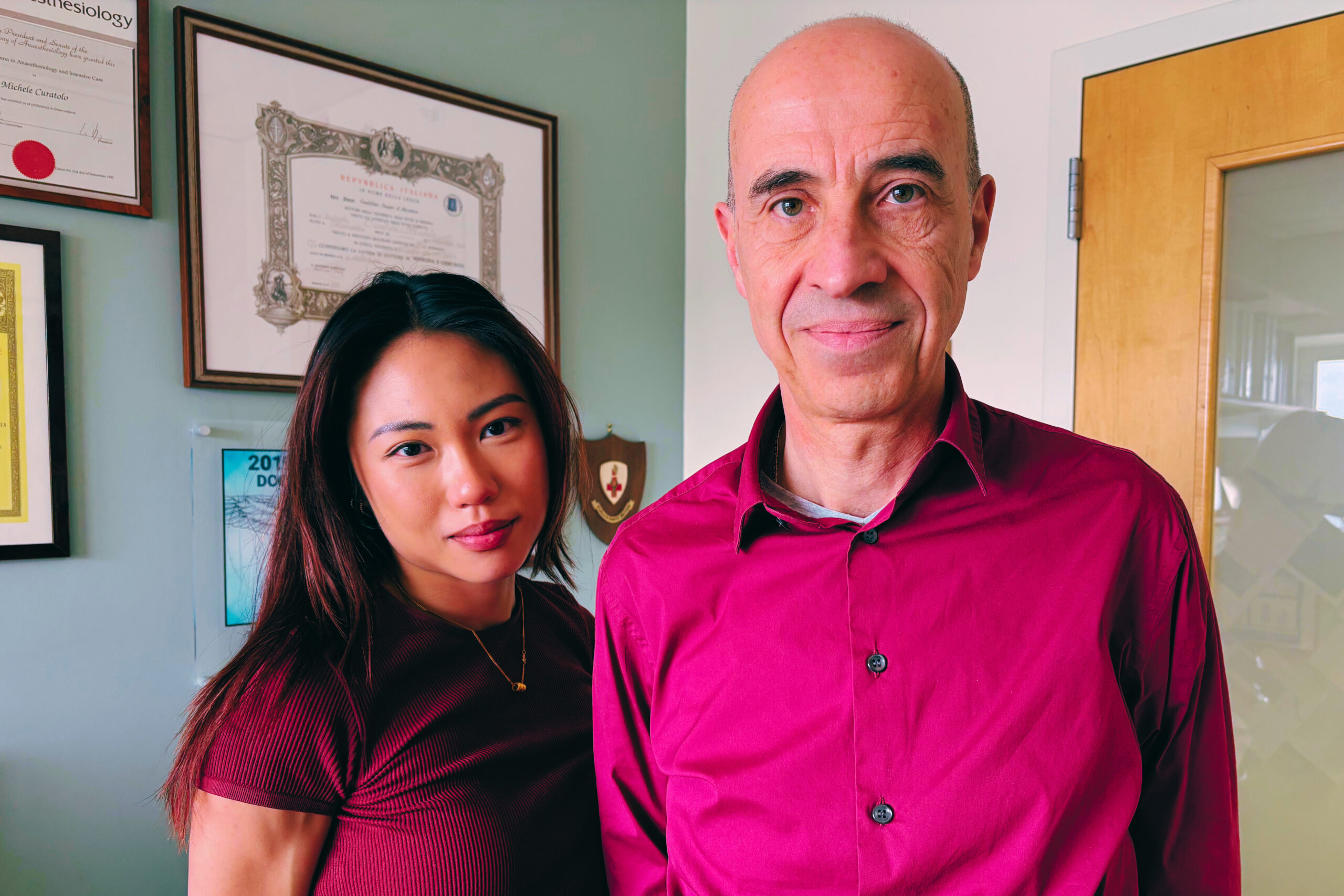When PhD candidate Abby Chiu initiated an extensive review of over 6,000 journal articles on disc degeneration under the supervision of Michele Curatolo, MD, PhD, she made a surprising discovery: only six human studies included measurements of pain.
Their scoping review, “Human Molecular Mechanisms of Discogenic Low Back Pain,” recently published in The Journal of Pain, underscores the urgent need to incorporate pain phenotyping in future research to better understand disc degeneration and the molecular mechanisms associated with low back pain. The collaborative study was conducted with Pavlos Bobos, PhD, at Western University, Canada; basic scientists at the University of Texas at Dallas; and Lars Arendt-Nielsen, Dr. Med.Sci., PhD, Professor at the University of Aalborg, Denmark.
Their research, according to Dr. Curatolo, challenges the assumption that disc degeneration is always the culprit behind low back pain. In fact, he says, “many individuals with disc degeneration do not experience pain at all, while others suffer significantly without notable degeneration.” This paradox raises a crucial question: what truly drives pain from the disc?
Analyzing limited findings
After Abby Chiu, Dr. Curatolo, and their collaborators narrowed their focus to the few studies that included clinical outcomes such as pain, disability, and sleep quality, patterns emerged. They analyzed studies that took tissues from patients and put them under a microscope—or used other methods—to understand which molecules, receptors, or pathways are associated with pain.
According to Dr. Curatolo, the scoping review encouragingly found “certain signals within the disc associated with inflammation or oxidated radicals, things that irritate the nerves and send a signal to the brain. All these things are a synthesis of different studies,” he stressed, “that need to be tested and further validated.”
Still, these findings highlight the opportunity for targeted therapeutics that address specific pain mechanisms at the molecular level, as current treatments like opioids and ibuprofen do not effectively target disc pain.
Overcoming the challenge of pain studies
When asked why there have not been studies like this to date, Dr. Curatolo shared multiple reasons. “One, we are often too fixated with what we see on the x-ray. Then, even if the evidence is clear that there is not a one-to-one correlation [between pain and degeneration], people still believe that if we fix the degeneration there will be less low back pain.
“Also, it is more difficult to do studies with pain because you have to phenotype patients well—meaning you have to collect all their characteristics and how much pain they have… Depression, anxiety, and other psycho-social factors influence the amount of pain. If you don’t have them in your analysis, you can miss the association.”
In other words, the same disc issue might be perceived as mild pain by one patient but severe by another. Patient consent and the workload for research teams can pose significant hurdles when a higher quantity of diverse tissue samples is necessary to account for these variables.
Centering humans in future research
Dr. Curatolo emphasizes the importance of focusing future research on pain mechanisms and patient-relevant outcomes, rather than primarily on radiological findings or animal models. By doing so, he believes the scientific community can develop more effective treatments for low back pain, ultimately improving patients’ outcomes and quality of life.
Currently, his research team at UW Department of Anesthesiology & Pain Medicine collaborates with the University of Texas at Dallas and MD Anderson Center to compare tissue samples from spine surgery patients with those from pain-free organ donors. By identifying biological differences in discs causing pain while also considering psycho-social factors that influence pain perception, they can collect and share pain-related data through the National Institute of Health’s Human Pain Precision Network.
Together, the partnering investigators could have an enormous impact on the future of low back pain treatment on a global scale.
Further reading
Chiu, A. P., Lesnak, J., Gabriel, K., Price, T. J., Arendt-Nielsen, L., Bobos, P., & Curatolo, M. (2025). Human molecular mechanisms of discogenic low back pain: A scoping review. The journal of pain, 27, 104693. https://doi.org/10.1016/j.jpain.2024.104693
Curatolo M, Chiu AP, Chia C, Ward A, Khan S, et al. (2025) Multi-omics profiles of chronic low back pain and fibromyalgia—Study protocol. PLOS ONE 20(4): e0312061. https://doi.org/10.1371/journal.pone.0312061
